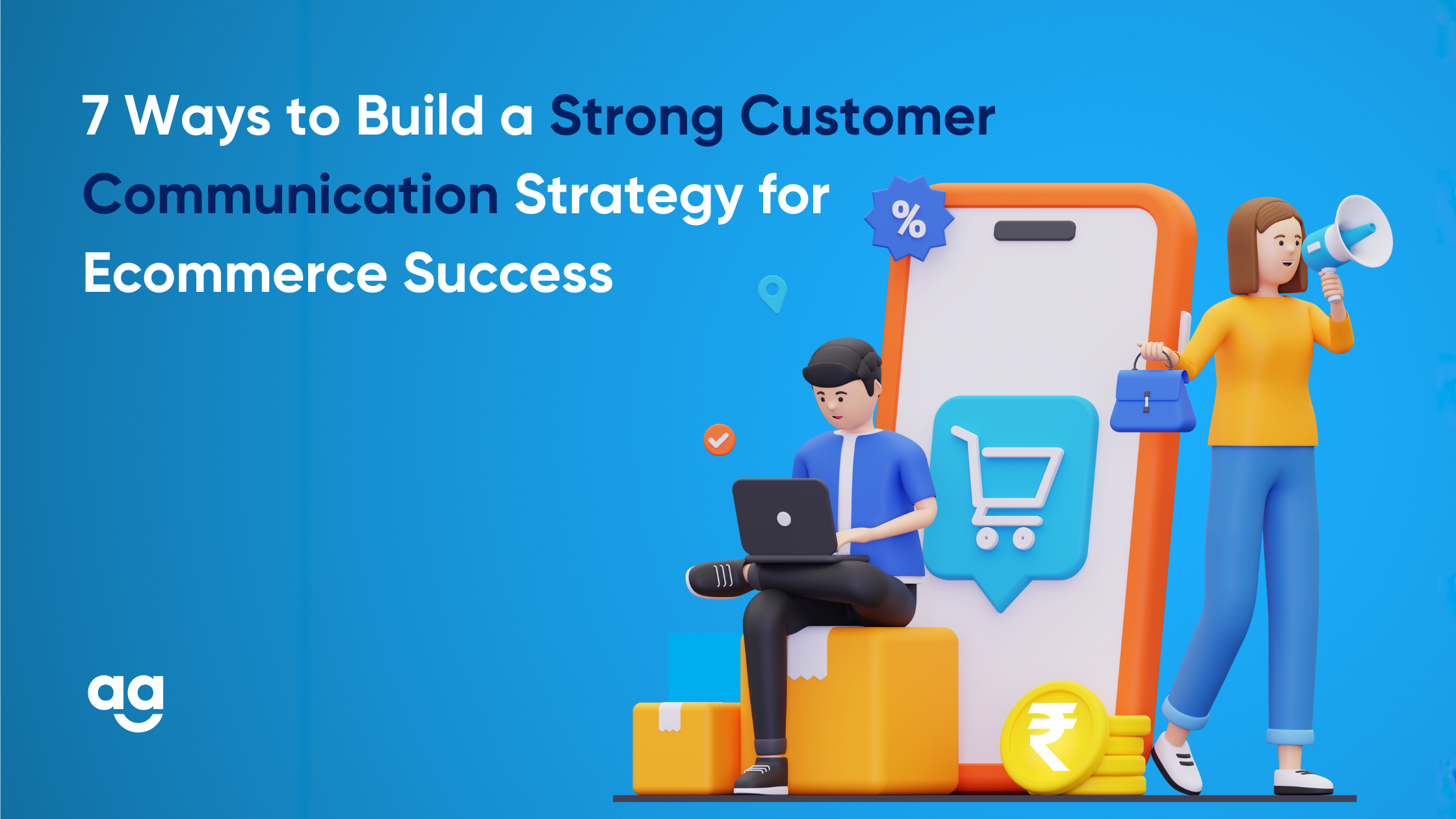In the highly competitive world of ecommerce, effective customer communication plays a vital role in building trust, driving sales, and ensuring long-term success. A strong customer communication strategy allows ecommerce businesses to engage with their customers, address their concerns, and provide exceptional support throughout the entire customer journey.
In this blog, we will explore the key elements of building a robust customer communication strategy and how it can contribute to your ecommerce success.
7 Ways to Build a Strong Communication Strategy
1. Personalize Communication
Personalization is the cornerstone of successful customer communication. Tailoring your messages and interactions to individual customers helps create a more meaningful connection while enhancing the overall customer experience.
Utilize customer data, such as purchase history, preferences, and browsing behavior, to segment your audience and deliver personalized content via email, SMS, or other channels. Personalization demonstrates that you understand and value your customers, fostering loyalty and driving repeat purchases.
2. Utilize Multiple Communication Channels
Different customers have different communication preferences, so it’s important to provide multiple channels for engagement. Offer options such as email, live chat, social media, and phone support to cater to various communication styles. This ensures that customers can reach you through their preferred channel, resulting in better satisfaction and a higher likelihood of resolving their queries or concerns quickly.
A multi-channel approach also allows you to meet customers where they are, increasing accessibility and convenience.
3. Implement Automated Email Workflows
Automated email workflows are powerful tools for nurturing customer relationships and driving engagement. Create workflows for various customer touch points, such as welcome emails, abandoned cart reminders, order confirmations, and post-purchase follow-ups. These automated emails provide timely and relevant information, personalized recommendations, and exclusive offers.
By leveraging automation, you can deliver consistent and targeted messages, increase customer engagement, and drive conversions.
4. Provide Proactive Customer Support
Proactive customer support goes beyond simply addressing customer inquiries or complaints; it involves anticipating and resolving issues before they escalate. Implement features such as live chat or chatbots on your website to offer instant assistance and answer commonly asked questions.
Utilize data analytics and customer feedback to identify potential pain points and address them proactively. By being proactive in your customer support, you can minimize frustration, improve satisfaction, and enhance the overall shopping experience.
5. Social Media Engagement
Social media has become a powerful communication and marketing tool for ecommerce businesses. Establish a strong presence on social media platforms relevant to your target audience. Regularly engage with your followers by responding to comments, messages, and mentions.
Use social media to share valuable content, showcase your products, run contests or promotions, and provide updates about your business. Social media engagement humanizes your brand, fosters community, and facilitates direct communication with customers.
6. Gather and Act on Customer Feedback
Listening to your customers is essential for continuous improvement and growth. Encourage customers to provide feedback through surveys, ratings, or reviews. Monitor and analyze customer feedback across different touchpoints to identify areas for improvement.
Actively address customer concerns, respond to reviews (both positive and negative), and take steps to rectify any issues raised. By demonstrating that you value and prioritize customer feedback, you build trust, strengthen relationships, and enhance your brand reputation.
7. Continuous Communication Optimization
Building a strong customer communication strategy is an ongoing process that requires constant evaluation and optimization. Regularly analyze key metrics, such as open rates, click-through rates, response times, and customer satisfaction scores.
Identify areas where communication can be improved and experiment with different approaches or messaging techniques. Embrace A/B testing to determine the most effective communication strategies for different customer segments. By continuously optimizing your communication efforts, you can stay relevant, adapt to evolving customer needs, and drive ecommerce success.
Conclusion
A well-crafted customer communication strategy is essential for ecommerce success. By personalizing communication, utilizing multiple channels, implementing automated email workflows, providing proactive customer support, engaging on social media, gathering and acting on customer feedback, and continuously optimizing your communication efforts, you can build strong customer relationships, increase satisfaction, and drive sales.
Invest time and resources into developing and refining your customer communication strategy, and reap the rewards of enhanced customer loyalty, positive brand reputation, and sustained ecommerce growth.





 Shipping
Shipping